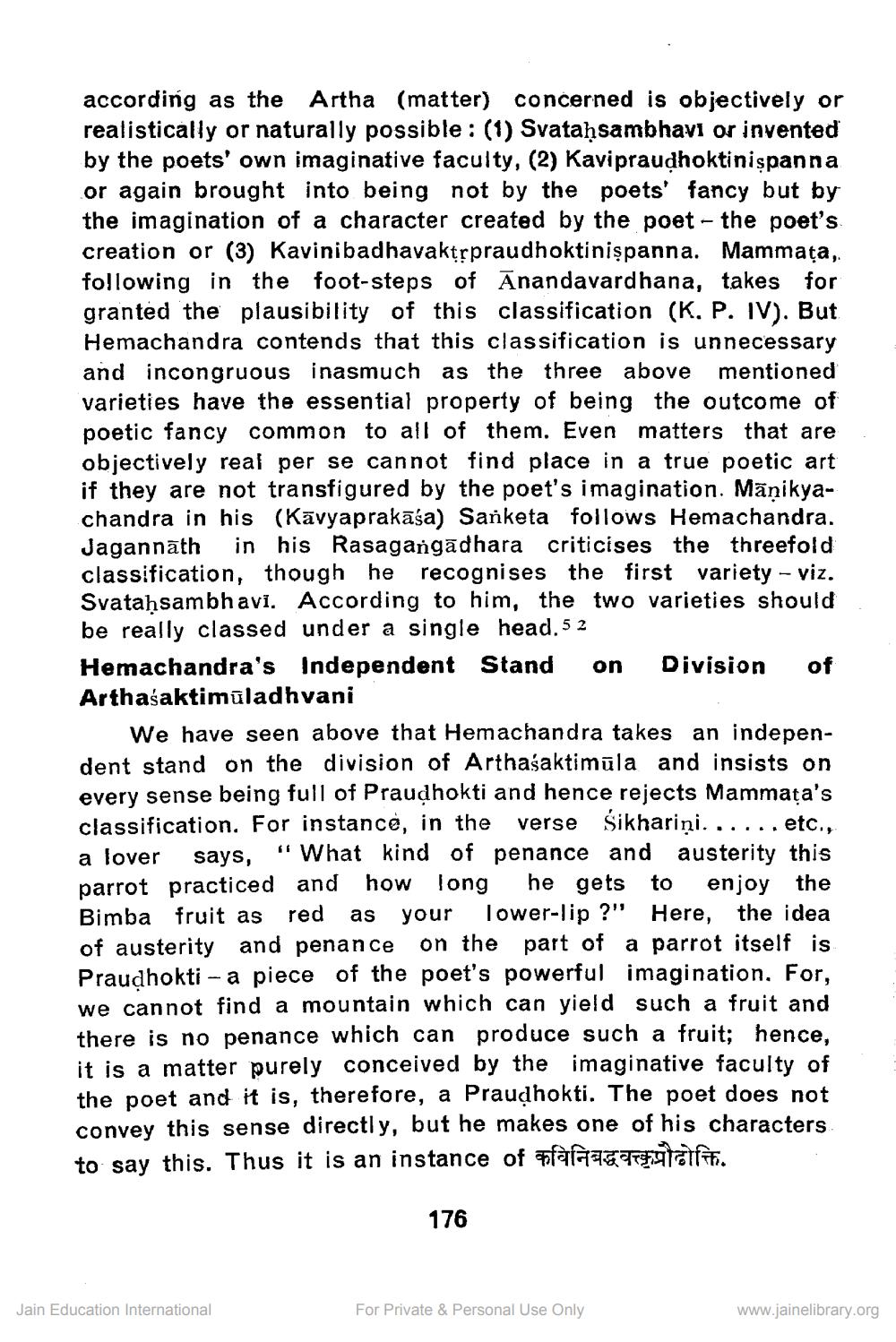________________
according as the Artha (matter) concerned is objectively or realistically or naturally possible: (1) Svataḥsambhavi or invented by the poets' own imaginative faculty, (2) Kavipraudhoktinispanna or again brought into being not by the poets' fancy but by the imagination of a character created by the poet - the poet's creation or (3) Kavinibadhavaktrpraudhoktinişpanna. Mammața, following in the foot-steps of Anandavardhana, takes for granted the plausibility of this classification (K, P. IV). But Hemachandra contends that this classification is unnecessary and incongruous inasmuch as the three above mentioned varieties have the essential property of being the outcome of poetic fancy common to all of them. Even matters that are obiectively real per se cannot find place in a true poetic art if they are not transfigured by the poet's imagination. Mānikyachandra in his (Kāvyaprakāśa) Sanketa follows Hemachandra. Jagannāth in his Rasagangādhara criticises the threefold classification, though he recognises the first variety - viz. Svataḥsambhavi. According to him, the two varieties should be really classed under a single head.5 2 Hemachandra's Independent Stand on Division of Arthasaktimüladhvani
We have seen above that Hemachandra takes an independent stand on the division of Arthasaktimula and insists on every sense being full of Praudhokti and hence rejects Mammata's classification. For instance, in the verse Sikhariņi. . . . . . etc., a lover says, "What kind of penance and austerity this parrot practiced and how long he gets to enjoy the Bimba fruit as red as your lower-lip?" Here, the idea of austerity and penance on the part of a parrot itself is Praudhokti - a piece of the poet's powerful imagination. For, we cannot find a mountain which can yield such a fruit and there is no penance which can produce such a fruit; hence. it is a matter purely conceived by the imaginative faculty of the poet and it is, therefore, a Praudhokti. The poet does not convey this sense directly, but he makes one of his characters to say this. Thus it is an instance of pfà a ratatliti.
176
Jain Education International
For Private & Personal Use Only
www.jainelibrary.org




